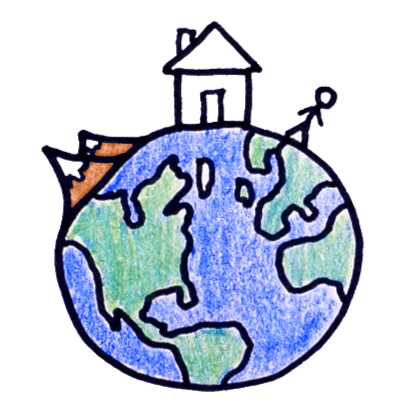2020-05-14
[public] 673K views, 22.0K likes, dislikes audio only
Check out Brilliant (and get 20% off) here: https://brilliant.org/MinuteEarth/
Sounds that animals make can be really different, and it turns out that there's a reason why some species communicate with certain sounds.
Thanks also to our Patreon patrons https://www.patreon.com/MinuteEarth and our YouTube members.
___________________________________________
To learn more, start your googling with these keywords:
frequency - how often a wave occurs in a certain unit of time
Hertz - a unit of frequency (Hz), the number of waves that occus in a second
pitch - a perceptual property of sounds that allows their ordering on a frequency-related scale
echolocation - the location of objects by reflected sound
refraction - the change in direction of a wave
diffraction - the bending of waves around obstacles and the spreading out of waves beyond openings
___________________________________________
Subscribe to MinuteEarth on YouTube: http://goo.gl/EpIDGd
Support us on Patreon: https://goo.gl/ZVgLQZ
And visit our website: https://www.minuteearth.com/
Say hello on Facebook: http://goo.gl/FpAvo6
And Twitter: http://goo.gl/Y1aWVC
And download our videos on itunes: https://goo.gl/sfwS6n
___________________________________________
Credits (and Twitter handles):
Video Writer, Director, and Narrator: Kate Yoshida (@KateYoshida)
Video Illustrator: Arcadi Garcia Rius (@garirius)
With Contributions From: Henry Reich, Alex Reich, Ever Salazar, Peter Reich, David Goldenberg, Julián Gómez, Sarah Berman
Music by: Nathaniel Schroeder: http://www.soundcloud.com/drschroeder
___________________________________________
Image and sound credits:
Cope's gray treefrog call
Credit: U.S. Geological Survey
Department of the Interior/USGS
Google Earth photos
Credit: Google, Maxar Technologies, Landsat/Copernicus
Bottlenose dolphin whistles
Credit: Centro Inderdisciplinare di Bioacustica e Richerche Ambientali, Università degli Studi di Pavia
http://www-3.unipv.it/cibra/edu_dolphins_uk.html
Humpback whale call
Credit: NOAA and Northeast Passive Acoustics Research Group
Koala call
Credit: FreeSoundEffects.com
Wolf howl sound - OrangeFreeSounds user Alexander
http://www.orangefreesounds.com/wolf-howl-sound/
___________________________________________
References:
Arch, V. A. and P. M. Narins. 2008. “Silent” signals: selective forces acting on ultrasonic communication systems in terrestrial vertebrates. Animal Behaviour 76: 1423–1428. https://www.mn.uio.no/cees/english/research/news/events/research/journal-clubs/eef/2008/silent-signals.html
Bedard Jr. and T. M. Georges. 2000. Atmospheric Infrasound, Physics Today, 53(3): 32-37. https://psl.noaa.gov/programs/infrasound/atmospheric_infrasound.pdf
Ladich F. and H. Winkler. 2017. Acoustic communication in terrestrial and aquatic vertebrates,” Journal of Experimental Biology 220: 2306–2317. https://jeb.biologists.org/content/jexbio/220/13/2306.full.pdf
Michelsen, A. and O.N. Larsen. 1983. Strategies for acoustic communication in complex environments. In: Neuroethology and Behavioural Physiology (ed Huber, F. and Markl, H.) pp. 321-331 Berlin: Springer-Verlag. https://link.springer.com/chapter/10.1007/978-3-642-69271-0_23
Narins, P.M., A.S. Stoeger, and C. O'Connell-Rodwell. 2016. Infrasonic and seismic communication in the vertebrates with special emphasis on the Afrotheria: An update and future directions. In Vertebrate Sound Production and Acoustic Communication (ed. R. A. Suthers, W. T. Fitch, R. R. Fay and A. N. Popper), pp. 191-227. Cham: Springer. https://link.springer.com/chapter/10.1007/978-3-319-27721-9_7
https://www.patreon.com/minuteearth
/youtube/video/amTRpjdoldc?t=20
/youtube/video/amTRpjdoldc?t=55
/youtube/video/amTRpjdoldc?t=84
/youtube/video/amTRpjdoldc?t=157
/youtube/video/amTRpjdoldc?t=186
/youtube/channel/UCeiYXex_fwgYDonaTcSIk6w
https://patreon.com/minuteearth
/youtube/video/4DF94Wvtekk

